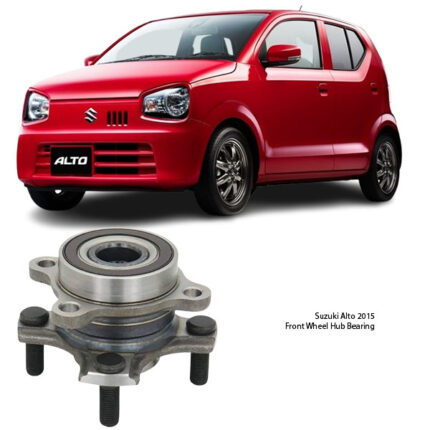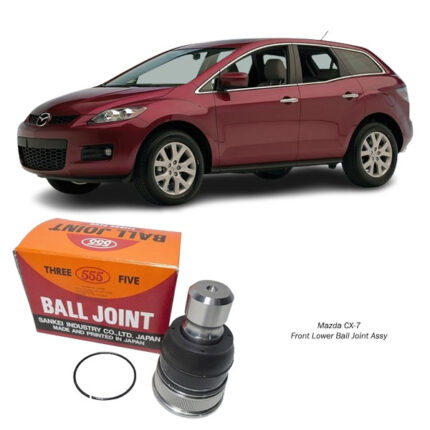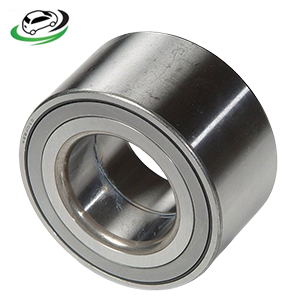-11%
Get Mazda CX-7 Front Wheel Hub Bearing in Kenya
The front wheel hub bearing is a crucial component in a vehicle’s suspension system. It connects the wheels to the axle, allowing smooth rotation with minimal friction. It also plays a significant role in supporting the vehicle’s weight and ensuring stability, especially during turns and high-speed driving.
A failing wheel hub bearing can cause various issues, such as unusual noises, poor handling, and even a loss of wheel control. This detailed guide will cover the function, types, benefits, common failure symptoms, and maintenance tips for front wheel hub bearings.
What is a Front Wheel Hub Bearing?
A front wheel hub bearing is a pre-assembled unit that consists of:
- Wheel bearing – A set of steel balls or tapered rollers enclosed in a metal ring.
- Hub – The part that connects the wheel to the axle.
- Mounting flange – Attaches the hub assembly to the vehicle’s suspension.
- ABS sensor (in some models) – Helps monitor wheel speed for the Anti-lock Braking System (ABS).
The wheel hub assembly is located at the center of the wheel and is secured to the steering knuckle with bolts. It allows the wheel to spin freely while keeping it properly aligned with the suspension.
How Does a Front Wheel Hub Bearing Work?
The front wheel hub bearing is designed to reduce friction and allow the wheels to rotate smoothly. The process works as follows:
- Load Distribution – The bearing supports the vehicle’s weight while absorbing forces from acceleration, braking, and cornering.
- Rolling Friction Reduction – The bearing’s metal balls or rollers minimize resistance, enabling smooth wheel rotation.
- Support for Steering – The hub assembly helps maintain wheel alignment and enhances steering precision.
- Integration with ABS (if applicable) – If the bearing has an ABS sensor, it continuously sends wheel speed data to the braking system.
Types of Front Wheel Hub Bearings
There are different types of wheel hub bearings used in vehicles, each designed for specific applications.
1. Ball Bearings
- The most common type of bearing.
- Contains steel balls that reduce friction and support the wheel’s movement.
- Found in most passenger cars.
2. Tapered Roller Bearings
- Designed to handle both radial and axial loads.
- Commonly used in trucks and SUVs for better load distribution.
- More durable but requires precise installation.
3. Sealed Wheel Hub Bearings
- Pre-assembled with lubrication and seals.
- Requires no maintenance and lasts longer.
- Prevents dirt and moisture from entering.
4. Serviceable Wheel Bearings
- Can be disassembled, cleaned, and re-greased.
- Found in older vehicles and heavy-duty applications.
- Requires periodic maintenance.
Benefits of a Front Wheel Hub Bearing
A high-quality wheel hub bearing is essential for safe driving and optimal vehicle performance.
1. Ensures Smooth Wheel Rotation
- Reduces friction between the wheel and axle.
- Enables consistent, noise-free movement.
2. Supports Vehicle Stability
- Helps maintain wheel alignment.
- Reduces wheel vibrations for a comfortable ride.
3. Enhances Steering Control
- Contributes to precise and responsive steering.
- Prevents wheel wobbling and misalignment.
4. Improves Fuel Efficiency
- Reduces rolling resistance, lowering energy consumption.
- Allows the engine to operate more efficiently.
5. Reduces Wear on Other Components
- Protects the axle, suspension, and tires from excessive strain.
- Extends the lifespan of surrounding parts.
6. Improves Safety
- Prevents wheel detachment in extreme cases.
- Ensures optimal braking performance, especially with ABS-equipped hubs.
Signs of a Failing Front Wheel Hub Bearing
A worn-out wheel hub bearing can cause serious driving issues. Look out for these warning signs:
1. Unusual Noises
- A humming, growling, or grinding sound that increases with speed.
- A clicking noise while turning could indicate a loose bearing.
2. Vibrations in the Steering Wheel
- Excessive wheel play can lead to steering instability.
- Vibrations worsen when accelerating or turning.
3. Uneven Tire Wear
- Misaligned or loose bearings cause irregular tire wear patterns.
- Reduces tire lifespan and increases fuel consumption.
4. ABS Warning Light (For ABS-Equipped Hubs)
- A faulty wheel speed sensor in the hub assembly triggers the ABS warning light.
- Can result in braking inefficiencies.
5. Loose or Wobbly Wheels
- If the wheel moves excessively when jacked up, the bearing may be loose.
- A severely worn bearing can cause complete wheel detachment.
6. Pulling to One Side
- A failing hub bearing affects wheel alignment.
- May cause the vehicle to pull left or right while driving.
Causes of Front Wheel Hub Bearing Failure
Several factors contribute to premature wheel bearing failure:
- Poor Road Conditions – Driving on rough or unpaved roads increases stress on the bearings.
- Water and Dirt Contamination – Moisture and debris cause corrosion and premature wear.
- Improper Installation – Over-tightening or under-tightening the bearing can lead to failure.
- Lack of Lubrication – Serviceable bearings require periodic re-greasing.
- Heavy Loads – Excessive vehicle weight puts additional strain on the bearing.
- High Mileage – Bearings naturally wear out over time (usually after 85,000 to 100,000 miles).
Front Wheel Hub Bearing Maintenance Tips
Maintaining your wheel hub bearing can prevent costly repairs and ensure safe driving.
1. Inspect Bearings Regularly
- Check for unusual noises, wheel play, or uneven tire wear.
- Have bearings inspected during tire rotations or brake servicing.
2. Keep Bearings Clean and Dry
- Avoid driving through deep water, mud, or harsh conditions.
- If water enters the bearing, it can lead to rust and failure.
3. Use High-Quality Bearings
- Always choose OEM or premium aftermarket bearings for durability.
- Cheap bearings wear out faster and cause steering instability.
4. Torque Fasteners to Manufacturer Specs
- Over-tightening or under-tightening wheel bearings can lead to failure.
- Use a torque wrench for proper installation.
5. Replace Both Bearings When Needed
- If one bearing fails, the other is likely worn out too.
- Replacing both ensures balanced handling and safety.
How to Replace a Front Wheel Hub Bearing
Replacing a front wheel hub assembly requires proper tools and expertise. Here’s a general step-by-step guide:
Tools Needed:
✔ Jack and jack stands
✔ Lug wrench
✔ Socket set
✔ Torque wrench
✔ Bearing puller (if necessary)
✔ New wheel hub bearing
Replacement Steps:
- Lift the Vehicle – Securely jack up the car and remove the wheel.
- Remove the Brake Caliper and Rotor – Detach the brake assembly for access.
- Unbolt the Hub Assembly – Use a socket wrench to remove fasteners.
- Extract the Old Bearing – Pull out the worn hub using a bearing puller.
- Install the New Hub Bearing – Secure it in place and tighten bolts to spec.
- Reassemble Brakes and Wheel – Reattach components and lower the vehicle.
- Test Drive – Ensure smooth operation before regular use.
Conclusion
The front wheel hub bearing is essential for smooth, stable, and safe driving. Regular inspection and timely replacement can prevent costly repairs and enhance vehicle performance.
If you experience noises, vibrations, or steering issues, don’t ignore them—check your wheel hub bearing and replace it if necessary! 🚗🔧
Follow us on Facebook for more parts.



